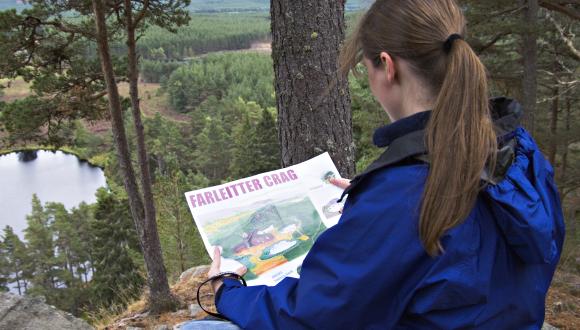
Scotland’s Marine Protected Area network
Scotland’s existing network of Marine Protected Areas consists of 244 sites.
The MPA Network
A network of Marine Protected Areas (MPAs) helps to protect nationally important marine wildlife, habitats, geology and undersea landforms. Scotland's MPA network makes a significant contribution to European, North-east Atlantic and global MPA networks and helps deliver our international commitments for protection of the marine environment. The term ‘MPA’ is a generic one and is used to refer to all of the types mentioned below.
The Scottish MPA network consists of 247 sites, 233 of these are for nature conservation purposes and are designated under various legislative frameworks and include:
- Nature Conservation MPAs
- Special Areas of Conservation
- Special Protection Areas
- Sites of Special Scientific Interest
- Ramsar sites
In addition there is one demonstration and research MPA, eight historic MPAs, and five Other Area Based Measures recognised as part of the Scottish MPA network. Other Area Based Measures (OABM) contribute to the protection of biodiversity but were not set up specifically for this purpose (e.g. Fisheries restrictions).
Nature Conservation MPAs (NC MPAs) are designated under the Marine (Scotland) Act 2010 and Marine and Coastal Access Act 2009. A total of 36 NC MPAs have been designated in Scotland’s seas, and give much-needed spatial protection to a wide range of marine wildlife, habitats and geology not previously covered by the network. Protection for a broader range of habitats and species means Scotland's MPA network is able to make a greater contribution to maintaining the ecosystem services we all depend upon.
Marine SACs and SPAs are international designations under the European Habitats Directive and Birds Directive and transposed into domestic legislation. Additional information can be found on our Marine European Sites page. There are 58 marine SACs protecting habitats and species listed in Annex I and Annex II of Council Directive 92/43/EEC. There are 58 marine SPAs protecting all migratory birds and species dependent on marine environment listed in Annex I of Directive 2009/147/EC.
SSSIs with marine components (65) are national designations under the Nature Conservation (Scotland) Act 2004. These include land and the foreshore generally only down to mean low water spring tide level. Ramsar sites contributing to the MPA network (16) are designated under the 1971 Wetlands of International Importance.
A leaflet explaining the different types of MPAs is available.
Learn about the link between OSPAR and the Scottish MPA Network and further information on NatureScot's MPA advice.
Developing the MPA network
The Marine (Scotland) Act 2010 and The UK Marine and Coastal Access Act (2009) provided provisions to designate new Nature Conservation MPAs within territorial and offshore waters respectively, to build on the existing network of marine SACs, SPAs, SSSIs and Ramsar sites.
Developing Scotland’s network of MPAs is part of a wider strategy to meet the Scottish Government’s commitment to a “clean, healthy, safe, productive and biologically diverse marine and coastal environment that meets the long term needs of people and nature”.
A well-managed network of MPAs will:
- protect important marine habitats and species
- deliver benefits for our marine environments
- support coastal communities
- help sustain marine industries
- provide for recreational uses
The approach for identifying Nature Conservation MPAs followed a science-based process as set out in the Scottish MPA Selection Guidelines. The first Report to Parliament on the progress to identify a network of MPAs was published in 2012 and further details can be found on the Background to the NC MPA Selection page.
The Marine Protected Area Network - 2018 Report to Parliament summaries the progress made in developing a Marine Protected Area (MPA) network for Scotland. There is a requirement under the Marine (Scotland) Act to report and review the network every 6 years and so the next report will be in 2024.
Stakeholder involvement
The development of the Scottish MPA network has involved work between Marine Scotland, the Joint Nature Conservation Committee (JNCC), Nature England, Historic Environment Scotland, the Scottish Environment Agency (SEPA) and NatureScot and a wider range of marine stakeholders.
Throughout the process there have been valuable contributions through:
- public consultation
- analysis and consideration of many thousands of consultations responses
- MPA stakeholder workshops and drop in sessions
- meetings with stakeholder representatives, marine user-groups, communities, non-governmental organisations (NGOs), local authorities and other regulators.
Find out more through our MPA advice page and explore our Survey and monitoring page. The latest news is on the main MPA page.






